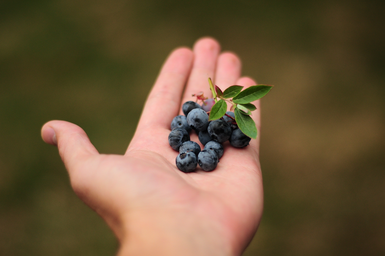I’m usually picky when it comes to the food I eat because I like what I like and that’s it. But, even though I’m picky it does not mean that when I look at others I’m not. I was thinking about my blueberry muffin that I ate earlier and I was like, “I wonder if there is more than to a blueberry than what I know?” So, this specific berry looked like jewelry that I see in very expensive stores! It just caught my eye and I did some research on this amazing berry…. The small berry of the Pollia condensata plant, found across Africa, exhibits the most intense blue color ever seen in a plant. Yet, it has no blue pigment. What is the secret behind its striking color?
Consider: The cell walls in the skin of the berry contain tiny threads arranged like rows of matches. These threads form layers, each layer set off at a slight angle to the layer below, so that the rising layers form a helical, or spiral, pattern. The threads themselves are not colored blue. The color comes from the way the threads are stacked. Thus, structure, not pigment, is the key to the berry’s intense metallic hue and iridescence. Most cells appear blue. But from different angles, some emit a green, pink, or yellow hue because of subtle changes in the layers. Moreover, when examined closely, the colors are not smooth and even but appear pixelated, like the colors on a computer screen.
Since Pollia berries have no pigment, they keep their color even after they drop from the plant. In fact, some berries collected over a century ago look as brilliant as fresh ones! Even though the berry has no edible pulp, just seeds, it sends an irresistible signal to nearby birds, according to the researchers. Scientists believe that the Pollia berry’s pigment – free color could inspire products ranging from fade – resistant dyes to counterfeit – resistant paper.
What do you think? Did the brilliant blue of the Pollia berry come about by evolution? Or was it designed? Hmm….

